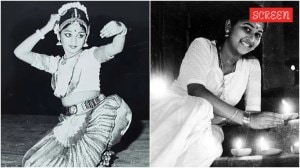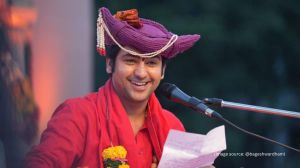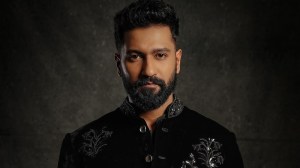J&K: a tough choice for Sonia
It is that time of year when the chinars in the Valley begin to change their colours. There is another prospect of change in the air: change...

It is that time of year when the chinars in the Valley begin to change their colours. There is another prospect of change in the air: change of political guard which is expected to occur on November 2, three years after the Mufti government came into being through a power-sharing arrangement between the PDP and the Congress.
There is, however, a question mark over this regime change. Sonia Gandhi has to take a call on whether Mufti Mohammed Sayeed goes and Ghulam Nabi Azad takes over in Srinagar, as per the agreement struck in 2002. It is not an easy decision. On the one hand, are the interests of the party; on the other, larger considerations. A Congress CM would naturally enthuse party cadres. Letting Mufti continue would mean yielding more ground to the PDP, leading to a “regional system” of parties in J&K — as in UP and Bihar. Of course, it is not as if the Congress did spectacularly well in the Valley during the last elections. Its leadership here has got depleted in recent years. There is no Congress leader here today to match Mufti — a Congressman all his life, who floated a regional outfit to acquire renewed relevance. He is considered the tallest leader in the state today.
Although Mufti is three years into his chiefministership, anti-incumbency has not set in. His PDP cadres may be dissatisfied, and many of them complain of being denied the perks of power, but Mufti’s appeal among people has not diminished. His advocacy of a “healing touch”, dialogue with the Hurriyat, the Srinagar-Muzzafarabad bus. His success in swinging a hefty Rs 24,000 crore package from Delhi, and the pro-active role played by daughter Mehbooba, whenever crises break out, have helped him. There is no charge of corruption against him, although this cannot be said of some ministers.
Sonia will also have to contend with the Jammu angle. For all the noises of reluctance that Ghulam Nabi Azad has made about going to Srinagar, Congress leaders are clear that if there is a change it can only be Azad. But he is from Doda, in the Jammu region. Ever since independence, the CM in the state has been from the Valley. Congress leaders argue that they will lose Jammu if Azad is denied chiefministership, with the BJP already sharpening its knives. They even go to the extent of arguing that Mufti will not lose ground in being out of power, while the Congress will.
But Congress rule may upset the delicate balance that presently prevails in the state. It will be seen as proxy rule by New Delhi — and, thanks to the mistakes made by the Congress in the mid-’80s, the anti-Delhi sentiment has turned into an anti-India feeling. Possibly for the first time in decades, people here are showing signs of faith in the electoral process because the Mufti government is not perceived as an extension of Central rule.
Go to Kashmir today and you will find how different it is from what it was even two years ago. Greater normalcy, fewer incidents of violence, one million tourists this year. The militants have not targeted the tourists, because they know it will anger the people if their rozi roti is hit. The real change, however, is in the popular mood. They want peace and normalcy. It was inconceivable to imagine, even a year ago, that people would come from the hinterland to hear mainstream party leaders. Today, Mehbooba Mufti’s meetings in South Kashmir attract crowds. Omar Abdullah’s meetings are well-attended. The young people, in particular, want to get on with their lives. The young hotel manager in Pahalgam plans to come to Delhi and then move to Paris. The young Kashmiri studying medicine in Minsk wants to return to the state and perhaps get into politics and “deliver on the things that matter”. The youth are now looking beyond orchards, to fields like IT. An aspirational revolution is taking place. People want to make up for the valuable time lost in the ’90s. Azaadi remains their “dream and desire”, but no longer their sole “objective”. Bijlee, paani, sadak, school, dispensary — they want all these too, and fast. The Hurriyat is also changing. It is talking of a dialogue, not about referendums and UN resolutions. It was the Hurriyat that sought the last round of talks with Prime Minister Manmohan Singh.
The government, on its part, has concluded that the gun is not the solution. The change is evident, and not just at the level of Manmohan Singh and Sonia Gandhi. It is also evident in government officials. Kashmiris have begun to notice this. Then there is the world situation after 9/11. International support for militancy of all kinds has declined dramatically.
There is, then, a window of opportunity in Kashmir today. A moment that may not come again. Sonia Gandhi’s decision entails not just choosing between two leaders — Mufti and Azad — or the parties they represent. It may well influence the future trajectory of the state and the peace process currently underway. It is a difficult choice indeed.



- 01
- 02
- 03
- 04
- 05



























